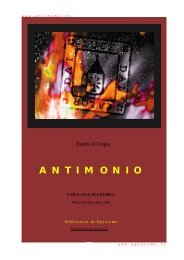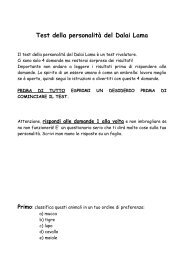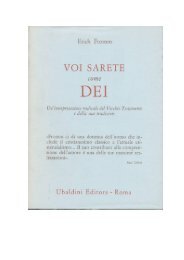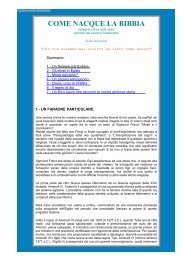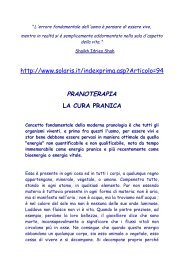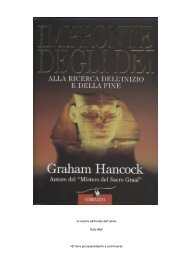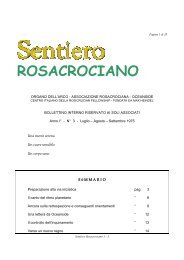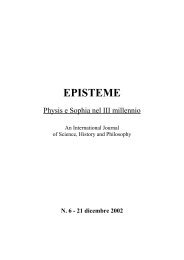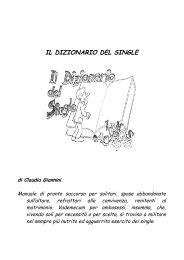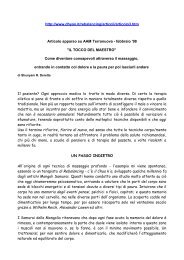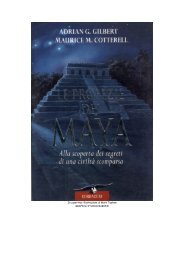58 dell'America nel racconto dei grandi navigatori italiani del Cinquecento, Milano, Editoriale Giorgio Mondadori, 1991, pp. 116-33. 10 Cfr. E. O'Gorman, op. cit., p.105. 11 Cfr. P. Chaunu, Conquête et exploitation des nouveaux mondes, XVIe s., Paris, P.U.F., 1969; tr. it. La conquista e l'esplorazione dei nuovi mondi, XVI secolo, Milano, Mursia, 1977. 12 Cfr. E. O'Gorman, op. cit., p. 139. 13 Cfr. H. Honour, The New Golden Land. European Images of America from the Discoveries to the Present Time, New York, Pantheon Books, 1975; F. Barker, et al. (eds), Europe and its Others, vol. II, Colchester, University of Essex Press, 1985; F. Surdich, Verso il Nuovo Mondo. La dimensione e la coscienza delle scoperte, Firenze, Giunti, 1990. 14 Cfr. G. Trevelyan, History of England, London, Longmans, 1960; tr. it. Storia d'Inghilterra, Milano, Garzanti, 1962; S. Morison, The European Discovery of America, vol. I, New York, Oxford University Press, 1971; tr. it. Storia della scoperta dell'America, vol. I, Milano, Rizzoli, 1976; M. Sanfilippo, Europa e America. La colonizzazione anglo-francese, Firenze, Giunti, 1990. 15 Cfr. H.M. Jones, O Strange New World, New York, The Viking Press, 1964; N. Canny, "The Ideology of English Colonization: From Ireland to America", William and Mary Quarterly, 3rd ser., XXX (1973), pp. 575-98. 16 E. Hayes, "Vicende ed esito del viaggio intrapreso nell'anno del Signore 1583 da Sir Humphrey Gilbert...", in F. Marenco (cur.), Nuovo Mondo. Gli Inglesi, 1496- 1640, Torino, Einaudi, 1990, pp. 92-93. 17 Cfr. F. Rossi, L'idea dell'America nella cultura inglese (1500-1625), vol. I, Bari, Adriatica Editrice, 1986, pp. 106-15. 18 Cfr. R. Hakluyt, The Principal Navigations, Voyages, Traffiques and Discoveries of the English Nation, London, 1598-1600, ed. J. Masefield, 8 vols, London, Everyman's Library, 1908 and 1962; F. Marenco (cur.), I viaggi di Hakluyt, 2 voll., Milano, Longanesi, 1966-1971. 19 Per l'inquadramento storico relativo alle colonie inglesi in America cfr. B. Bailyn and G.S. Wood, The Great Republic: A History of the American People, Lexington, D.C. Heath and Company, 1985, tr. it. Le origini degli Stati Uniti, Bologna, Il Mulino, 1987; R.D. Mitchell, "The Colonial Origins of Anglo-America" in R.D. Mitchell and P.A. Groves (eds), North America: The Historical Geography of a Changing Continent, Totowa, Rowman and Littlefield, 1987, pp. 93-127; R.C. Simmons, The American Colonies, New York, David McKay Company, 1976.
20 C. Bartocci, Gli Inglesi e l'Indiano: racconto di un'invenzione (1580-1660), Alessandria, Edizioni Dell'Orso, 1992, cui si rimanda per un'analisi più ampia e dettagliata delle fonti primarie citate a sostegno delle considerazioni qui espresse. <strong>21</strong> E. O'Gorman, op. cit., p. 141. 22 Tale è anche la tesi sostenuta ed ampiamente illustrata da J. Axtell in The European and the Indian, New York and Oxford, Oxford University Press, 1981. 23 W.E. Washburn, The Indian in America, New York and London, Harper and Row, 1975; tr. it. Gli indiani d'America, Roma, Editori Riuniti, 1981, p. 77. 24 Cfr. W.B. Jacobs, Dispossessing the American Indian, Norman, University of Oklahoma Press, 1985. 25 La prima menzione del nome Armenica, o America, in inglese, si trova in un testo pubblicato attorno al 1510 ad Antwerp dal titolo Of the newe landes and ye people found by the messengers of the kynge of portyngal; nel 1520 il nome America figurava di nuovo nel recitativo satirico di John Rastell A new interlude and a mery of the nature of the four elements, a testimonianza di quanto l'ambiente dei teatranti fu pronto ad appropriarsi del materiale linguistico e figurativo ispirato dal Nuovo Mondo. Entrambe le opere furono ristampate da Edward Arber nel 1885 in The First Three English Books on America. Per queste notizie cfr. H.C. Porter, The Inconstant Savage, cit., pp. 18 e 34-40. 26 Di fronte alla possibile obiezione che la diversità dei metodi praticati dalle due potenze europee fu determinata dalla sostanziale diversità numerica dei popoli incontrati, Patricia Seed fa notare come sia il sistema dell'encomienda, creato nel 1503, sia la dottrina del Requerimiento, che risale al 1512, ebbero origine "quando gli stanziamenti spagnoli erano ancora confinati a poche isole dei Caraibi non più densamente popolate delle aree in seguito rivendicate dagli Inglesi", e che l'interesse primario di questi ultimi per la terra appare chiaro fin dalla patente concessa da Elisabetta nel 1578, prima che qualsiasi spedizione potesse aver accertato che quelle zone non fossero popolate come il Messico e il Perù. Cfr. Patricia Seed, "Taking Possession and Reading Texts: Establishing the Authority of Overseas Empires", William and Mary Quarterly, 3rd ser., XLIX (1992), pp. 183-209. 27 T. Harriot, A Report of the New Found Land of Virginia, London, 1588; facsimile, Amsterdam and New York, Theatrum Orbis Terrarum Ltd., 1971. 28 Si vedano, ad esempio, R. Gray, A Good Speed to Virginia, London, 1609, facsimile, Amsterdam and New York, Theatrum Orbis Terrarum Ltd., 1970, e W. Crashaw, A New-yeeres Gift to Virginea, London, 1610. 29 J. Smith, A True Relation of such occurences and accidents of noate as hath hapned in Virginia, London, 1608; A Map of Virginia, Oxford, 1612, A Description of New England, London, 1616, per citare solo le più celebri, tutte contenute insieme 59
- Page 1 and 2:
EPISTEME Physis e Sophia nel III mi
- Page 3 and 4:
EPISTEME Physis e Sophia nel III mi
- Page 5 and 6:
INFORMAZIONI EDITORIALI - - - - - E
- Page 7 and 8: Files of the papers, in doc or txt
- Page 9 and 10: del Rainbow portrait della regina E
- Page 11 and 12: EFFICERE DEOS La forma religiosa co
- Page 13 and 14: narrativa, utilizzando "vesti" appa
- Page 15 and 16: ma è il preciso modo di allogare i
- Page 17 and 18: intellettuale s'identificano 47 cos
- Page 19 and 20: 13 questo ruolo di medium è stato
- Page 21 and 22: Dionigi ma soltanto nel XII sec. pe
- Page 23 and 24: ciclica della storia, nel favoleggi
- Page 25 and 26: trasportato re Artù, mortalmente f
- Page 27 and 28: le sponde orientali dell'Orbis Terr
- Page 29 and 30: all'inclusione del nuovo continente
- Page 31 and 32: che, in seguito al distacco dalla C
- Page 33 and 34: parte, poiché continua ad ostacola
- Page 35 and 36: per la sua immensa estensione, fa e
- Page 37 and 38: propria campagna di pubblica vendit
- Page 39 and 40: ufficiale che legalizzasse il loro
- Page 41 and 42: Maryland in cerca di nuove possibil
- Page 43 and 44: climatiche e geografiche affini a q
- Page 45 and 46: civiltà, gli Indiani vivevano un r
- Page 47 and 48: sorpresa, in piccoli gruppi o anche
- Page 49 and 50: completamente irradiato la Indian w
- Page 51 and 52: americana ante-litteram. Si possono
- Page 53 and 54: già determinato a priori, quanto a
- Page 55 and 56: vigore e barbarie, innocenza e paga
- Page 57: Note 1 M. Eliade, Mythes, rêves et
- Page 61 and 62: Amsterdam nel 1637. Morton accusa i
- Page 63 and 64: América Latina en búsqueda del ca
- Page 65 and 66: los países que "llevan la delanter
- Page 67 and 68: Pero sí nos atrevemos a prever que
- Page 69 and 70: Las razones de la duda Hay cierta c
- Page 71 and 72: del paradigma del nómada en el del
- Page 73 and 74: incertidumbre del mañana, porque n
- Page 75 and 76: ecogedor al del campesino-productor
- Page 77 and 78: establecimiento de empresas agríco
- Page 79 and 80: paradigma productivo sino algo much
- Page 81 and 82: tropezó con el continente american
- Page 83 and 84: El mapa conceptual Bibliografía -
- Page 85 and 86: 13 Es bien conocido como en uno de
- Page 87 and 88: L'ENIGMA DELLE PIETRE DI ICA (Lucia
- Page 89 and 90: I contadini del luogo, di generazio
- Page 91 and 92: comprare egli stesso quante più pi
- Page 93 and 94: dell'Università di Bonn. I risulta
- Page 95 and 96: tecnologia avanzatissima, patrimoni
- Page 97 and 98: Insolito": "Si sa che le foglie si
- Page 99 and 100: Sempre nella serie sulla chirurgia
- Page 101 and 102: pietre che mostrano gli emisferi te
- Page 103 and 104: ENDOCRINOLOGIA GLITTOLITICA Da poch
- Page 105 and 106: Qualche commento in proposito… (c
- Page 107 and 108: Le "spiegazioni" degli "avversari"
- Page 109 and 110:
Le pietre magiche precolombiane res
- Page 111 and 112:
Allora veniamo all'ipotesi, o alla
- Page 113 and 114:
dinosauri, che eseguono trapianti d
- Page 115 and 116:
Come, da soli, o grazie a poche rig
- Page 117 and 118:
such things have known for a long t
- Page 119 and 120:
vengono fotografati e descritti nel
- Page 121 and 122:
dans la région. Qu'en est-il de ce
- Page 123 and 124:
discutibile, e soprattutto abusata
- Page 125 and 126:
distinzioni, testimoniata soprattut
- Page 127 and 128:
permane una difficoltà decisiva: c
- Page 129 and 130:
1. Introduzione Matematica e Comput
- Page 131 and 132:
2. Due tappe fondamentali del Calco
- Page 133 and 134:
T. Pentilla & G.F. Royle, On Hypero
- Page 135 and 136:
M. Giulietti and R. Casse, Gruppi d
- Page 137 and 138:
6. Appendice La spirale della creat
- Page 139 and 140:
Nel secolo dei lumi ,infatti, si ri
- Page 141 and 142:
che le congetture di un moderno opp
- Page 143 and 144:
Note 1 C.P. Snow : Le due culture,
- Page 145 and 146:
creati con la parte più influente
- Page 147 and 148:
Naturalmente, così come era stato
- Page 149 and 150:
doveva più propriamente assumersi
- Page 151 and 152:
1.4 L'autunno del 1688 Era chiaro c
- Page 153 and 154:
Due sono i punti saldi sui quali Le
- Page 155 and 156:
questa ipotesi sta il fatto che, a
- Page 157 and 158:
mercurio, discenda da V verso T, la
- Page 159 and 160:
4. Un secondo Tentamen Come si evin
- Page 161 and 162:
doveva possedere simmetria sferica
- Page 163 and 164:
agione, nel senso opposto a quello
- Page 165 and 166:
La costruzione logico-geometrica de
- Page 167 and 168:
gravitazionali annullatisi all'inte
- Page 169 and 170:
I LEGAMI CHIMICI sono dati dalla di
- Page 171 and 172:
solido (quindi 3 lati) in meno. Va
- Page 173 and 174:
Considero questa teoria come il nat
- Page 175 and 176:
with the aim of rescuing the intuit
- Page 177 and 178:
classical momentum p = mv and energ
- Page 179 and 180:
case of the AC effect which involve
- Page 181 and 182:
In the standard interpretation of t
- Page 183 and 184:
The force (7) is not contained expl
- Page 185 and 186:
closed circuit) that implies accele
- Page 187 and 188:
[12] G. Spavieri, R. Angulo and O.
- Page 189 and 190:
1. The Current State of Our Univers
- Page 191 and 192:
As a means of increasing the scope
- Page 193 and 194:
For reasons developed below it is l
- Page 195 and 196:
thus it gives rise to a 2/3 unit of
- Page 197 and 198:
processes are not sensitive to the
- Page 199 and 200:
processes of dark and light fringe
- Page 201 and 202:
moved to a new location due to its
- Page 203 and 204:
motion of the graphite target in th
- Page 205 and 206:
of pulses detected B1during this pe
- Page 207 and 208:
- - - - - Ken H. Seto, BS Chem. Eng
- Page 209 and 210:
[Episteme is sorry that, due to the
- Page 211 and 212:
who admired the Sun, Moon, and Star
- Page 213 and 214:
conclude with due Respects to Learn
- Page 215 and 216:
38, 39. The first Law fully conside
- Page 217 and 218:
97. Some further Remarks on the sam
- Page 219 and 220:
and Souls of Men, answered, and the
- Page 221 and 222:
[These last lines, with their frequ
- Page 223 and 224:
of work. His personality was most o
- Page 225 and 226:
have been made … expanding models
- Page 227 and 228:
apart from the hypothesis of a "hit
- Page 229 and 230:
Nernst's Interpretation Hubble made
- Page 231 and 232:
new interpretation. From an astrono
- Page 233 and 234:
Comparative Cosmology Let us make a
- Page 235 and 236:
adopted by numerous (quantitatively
- Page 237 and 238:
[6] E. Hubble, M. L. Humason, Ap. J
- Page 239 and 240:
COMMENTI RICEVUTI 239
- Page 241 and 242:
sono identificati con la sequenza Z
- Page 243 and 244:
Infatti la scissione formale tra le
- Page 245 and 246:
come la nostra dama. I Matronalia,
- Page 247 and 248:
che Mercurio porta l'elmo di Ade. L
- Page 249 and 250:
loro idee fossero rese pubbliche do
- Page 251 and 252:
piani differenti e ciò gli consent
- Page 253 and 254:
Una questione relativa alle origini
- Page 255 and 256:
la continuità non fosse edilizia b
- Page 257 and 258:
contatto. Questo è individuabile i
- Page 259 and 260:
allegorico (non simbolico) del mond
- Page 261 and 262:
la "carboneria" fu semplicemente pa
- Page 263 and 264:
mancati riconoscimenti ed emarginaz
- Page 265 and 266:
1 Robert L. John, DANTE, trd. it. D
- Page 267 and 268:
Il processo di costruzione di una t
- Page 269 and 270:
MACHIAN THOUGHTS Relational Mechani
- Page 271 and 272:
I. Old World (pp. 13-160) 1. Newton
- Page 273 and 274:
affected by the medium in which it
- Page 275 and 276:
Archeologia proibita: la storia seg
- Page 277 and 278:
merito a tali episodi - "si tratta
- Page 279 and 280:
maggior parte degli archeologi sost
- Page 281 and 282:
ma come esistessero concezioni diff
- Page 283 and 284:
meccanismi sociali di filtraggio de
- Page 285 and 286:
sull'esistenza di tale meccanismo,
- Page 287 and 288:
debba dunque essere respinto; e la
- Page 289 and 290:
poi (e qualche volta esclusivamente
- Page 291 and 292:
napoleonico e il relativo conflitto
- Page 293 and 294:
2 Almeno finché la storia vi si in
- Page 295 and 296:
Dalla partenza delle caravelle: Rod
- Page 297 and 298:
1708- Svelato il passaggio di Colom
- Page 299 and 300:
CAPITOLO SETTIMO 1746 - Rivolta del
- Page 301 and 302:
1684 - Genova bombardata dal Re Sol
- Page 303 and 304:
greatest scientist of all times - o
- Page 305 and 306:
elativistic ether cannot have the s
- Page 307 and 308:
Il prossimo numero di Episteme - Ep



